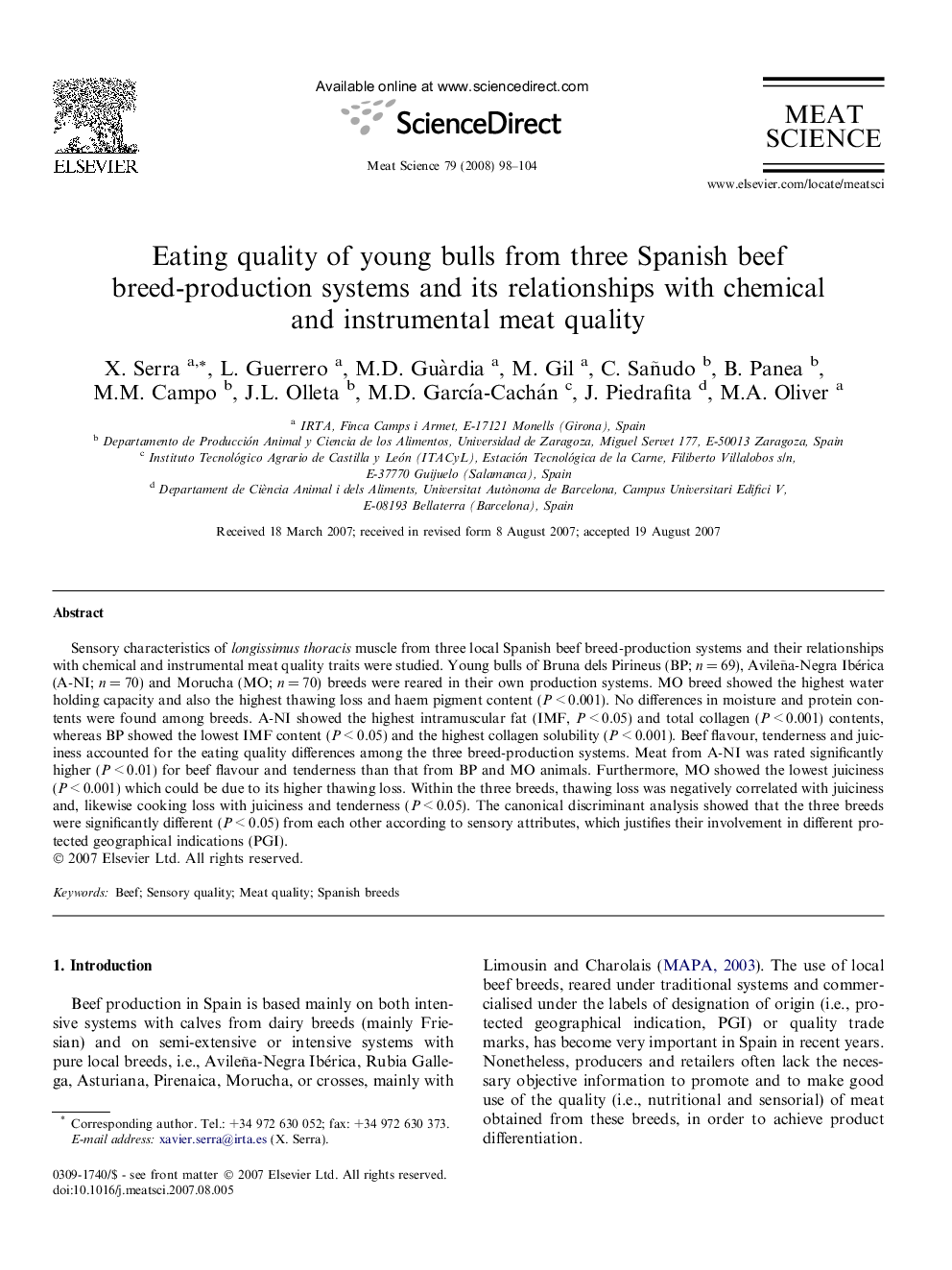| Article ID | Journal | Published Year | Pages | File Type |
|---|---|---|---|---|
| 2451755 | Meat Science | 2008 | 7 Pages |
Sensory characteristics of longissimus thoracis muscle from three local Spanish beef breed-production systems and their relationships with chemical and instrumental meat quality traits were studied. Young bulls of Bruna dels Pirineus (BP; n = 69), Avileña-Negra Ibérica (A-NI; n = 70) and Morucha (MO; n = 70) breeds were reared in their own production systems. MO breed showed the highest water holding capacity and also the highest thawing loss and haem pigment content (P < 0.001). No differences in moisture and protein contents were found among breeds. A-NI showed the highest intramuscular fat (IMF, P < 0.05) and total collagen (P < 0.001) contents, whereas BP showed the lowest IMF content (P < 0.05) and the highest collagen solubility (P < 0.001). Beef flavour, tenderness and juiciness accounted for the eating quality differences among the three breed-production systems. Meat from A-NI was rated significantly higher (P < 0.01) for beef flavour and tenderness than that from BP and MO animals. Furthermore, MO showed the lowest juiciness (P < 0.001) which could be due to its higher thawing loss. Within the three breeds, thawing loss was negatively correlated with juiciness and, likewise cooking loss with juiciness and tenderness (P < 0.05). The canonical discriminant analysis showed that the three breeds were significantly different (P < 0.05) from each other according to sensory attributes, which justifies their involvement in different protected geographical indications (PGI).
